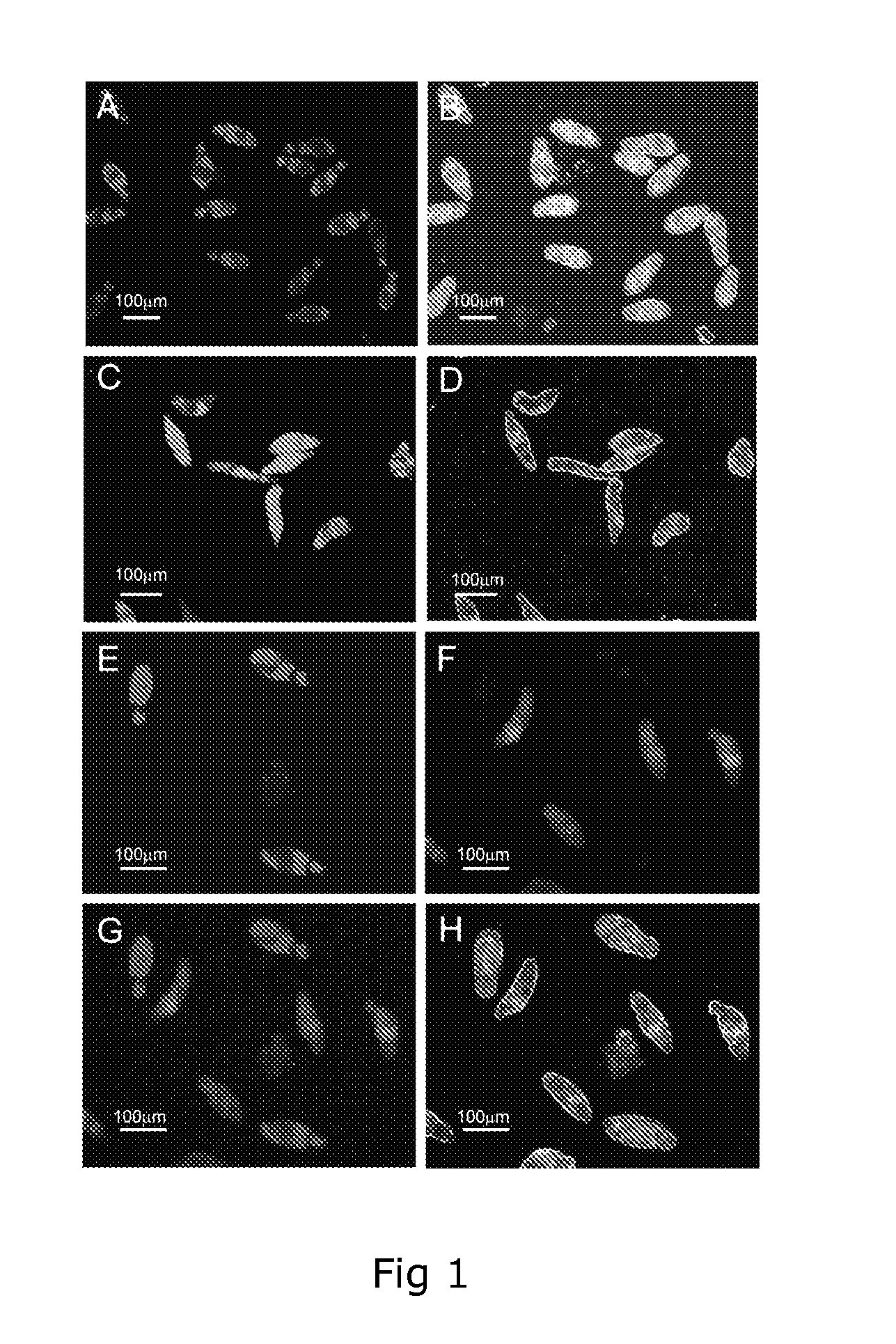Dual Fluorescence Assay For Determining Viability Of Parasitic Or Non-Parasitic Worms
a technology of parasitic or non-parasitic worms and fluorescence assays, applied in the direction of diagnostics, chemical analysis using titration, sensors, etc., can solve the problems of inability to identify novel anti-schistosome drugs at high-throughput, lack of appropriate quantification methods,
- Summary
- Abstract
- Description
- Claims
- Application Information
AI Technical Summary
Benefits of technology
Problems solved by technology
Method used
Image
Examples
Embodiment Construction
[0118]With only one effective drug, praziquantel, currently used to treat most worldwide cases of schistosomiasis there exists a pressing need to identify alternative anthelmintics before the development of praziquantel-resistant schistosomes removes our ability to combat this neglected tropical disease. At present, the most widely adopted methodology used to identify promising new anti-schistosome compounds relies on time consuming and subjective microscopic examination of parasite viability in response to in vitro schistosome / compound co-culturing. In our continued effort to identify novel drug and vaccine targets, we detail a dual-fluorescence bioassay that can objectively be used for assessing Schistosoma mansoni schistosomula viability in a medium or high- throughput manner to suit either academic or industrial settings. The described methodology replaces subjectivity with sensitivity and provides an enabling technology useful for rapid in vitro screens of both natural and synt...
PUM
 Login to View More
Login to View More Abstract
Description
Claims
Application Information
 Login to View More
Login to View More - R&D
- Intellectual Property
- Life Sciences
- Materials
- Tech Scout
- Unparalleled Data Quality
- Higher Quality Content
- 60% Fewer Hallucinations
Browse by: Latest US Patents, China's latest patents, Technical Efficacy Thesaurus, Application Domain, Technology Topic, Popular Technical Reports.
© 2025 PatSnap. All rights reserved.Legal|Privacy policy|Modern Slavery Act Transparency Statement|Sitemap|About US| Contact US: help@patsnap.com



